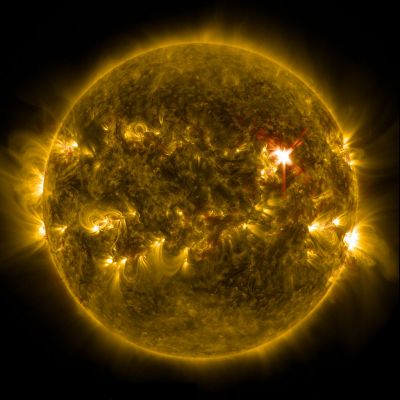Solar radio and microwave emission provides valuable information that
can be obtained even from ground-based radio telescopes. A consortium of
international experts from three EU Member States (Czech Republic,
Poland and the United Kingdom) and two eligible states (China and
Russia) launched the EU-funded project 'Radiophysics of the Sun' (
RADIOSUN) to advance the field.
Cross-disciplinary training and personnel exchange will ensure preparation of a new generation of scientists with the necessary foundations for innovation and collaboration. The teamwork will enable full exploitation of existing and planned facilities, some of the most powerful radio telescopes around. Among these are the new Chinese Spectral Radioheliograph (CSRH) and the world's biggest telescope, the Atacama Large Millimeter/submillimeter Array (ALMA) in Chile that connects 66 large radio dishes together.
Major advances have already been achieved regarding quasi-periodic pulsations during solar flares, sudden releases of magnetic energy built up in the solar atmosphere. RADIOSUN identified the physical mechanisms underlying a zebra pattern, a complex and common spectral feature of solar flares — the formation of which was poorly understood. Results led scientists to a new semi-empirical model of pulsars, dense neutron stars that also emit short, periodic bursts of radiation.
The solar corona, the extended outer atmosphere of the Sun consisting of million-degree plasma, is also a fertile site of waves and oscillations, including sausage waves and fast wave trains. Again, the physical mechanisms have been elusive. The team identified them for many waves and used the information to create new models that deepened understanding of the magnetic nature of the coronal plasma and extreme space weather events.
By its half-way point, RADIOSUN discoveries and innovation led to 30 publications in leading international astrophysics journals and a state of readiness to fully exploit data to be received from CSRH and ALMA. Aside from a major contribution to the education of a new era of researchers, RADIOSUN is delivering results that are transforming understanding of solar activity of basic and practical value. Such activity has important effects on man-made devices orbiting the Earth and on the ground, and better predictions of events are expected.

